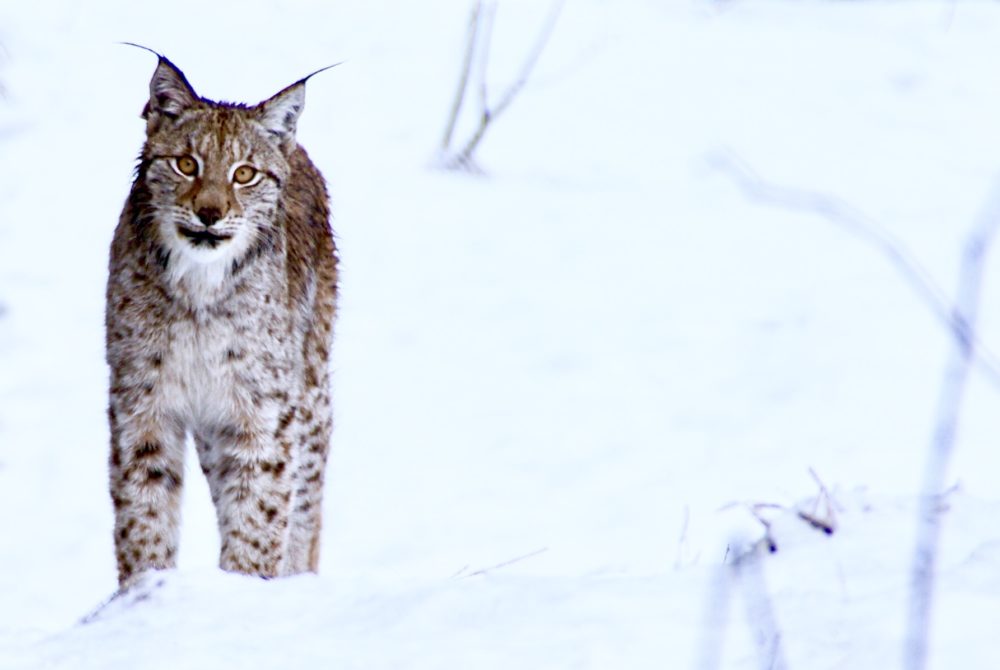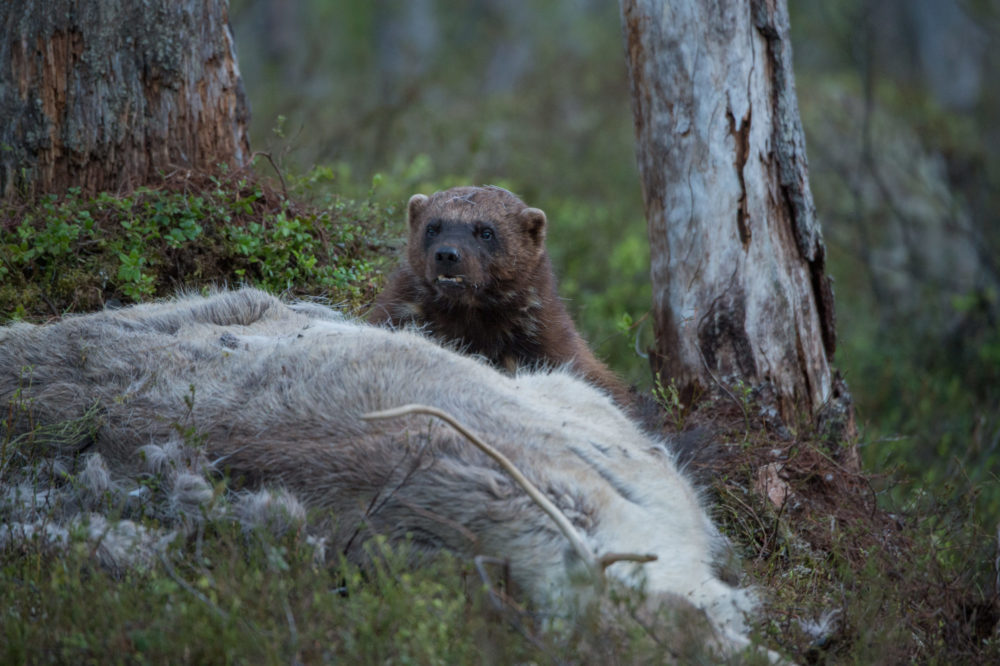Carnivores and grazing animals
We have both carnivores and grazing animals in the Norwegian nature, of which has lead to challanges and conflicts regarding the management. The solution Norway has landed on i to separate carnivores and grazing animals in space and time.
We shall have both large carnivores and grazing animals (livestock)
The authorities have decided that Norway shall have both carnivores and livestock living off of nature. In this decision Norway has agreed to manage a healthy populations of wolves, lynxes, wolverines, bears and golden eagles, at the same time as we will keep livestock in outlying pastures. Additionally, the Sami people’s right to keep semi-domesticated reindeer is continued.
The political measures the authorities have chosen to reduce the conflict of interrests between livestock and carnivores is to separate them in time and space. Practically speaking, this means that carnivores are prioritized in some areas, while sheep, semi-domesticated reindeer, and other livestock, have priority in other areas.
As good as this sound, it is not without issues. Neither carnivores nor livestock reads map or see borders between municipalities, and the “carnivore conflict” lives on.

Management areas for carnivores
The areas where the authorities have decided that carnivores should have priority are called management areas. The most famous management area is the so called “wolf zone”, which is where the wolf is allowed to live and reproduce. Within the management area for reproducing wolf it is the the wolf that is prioritized, while the other three carnivores have their own management areas where they have priority.
As soon as the carnivores walks outside of their respective management areas, they are no longer of a higher priority than that of grazing animals. In practical terms, this means that carnivores are often culled through licenced hunters if they settle down in regions outside of their own management areas.
The wolverine and the lynx kills the most livestock
The wolverine is responsible for the most sheep lost to predators, and the lynx doesn’t lag far behind. Both of these two carnivores are also the ones that kill the most of the samis semi-domesticated reindeer. The golden eagle is also well represented in the former.
In 2020, livestock owners in Norway were compensated for about 6 000 sheep, and 5 500 as a result of grazing animals lost to wolverine. For lynx, the numbers were 3 300 sheep and 5 100 semi-domesticated reindeer. These numbers are significantly higher compared to those from bears and wolves, which both killed less than 2 000 sheep and just a few hundreds of semi-domesticated reindeer during the same period.

Can one keep grazing animals in an carnivore management area
There are still farmers the hold grazing animals within management areas for wolves and bears, but they are getting ever fewer. It is of course challenging to keep livestock where carnivores are prioritized, and almost all of the pastures are fenced – more often than not neighbouring the farm, and other areas where they can keep an eye on their livestock. This is of course a completely different way of keeping grazing animals than what is the norm in the rest of Norway.
The situation is a little different in the management areas where wolverines and lynx are prioritized; there are still many lifestock owners that release their lifestock into open, outlying pastures, even though these two carnivores represent higher losses.
Measures to reduce loss of grazing animals to carnivores
it is inevitable that sheep and reindeer will be lost to predatory game, even though we try to keep them separated in time and space. A large number of preventive measures have been tried out for grazing livestock through the years.
Some of the measures that have proved most effective against sheep loss to carnivores are delayed release, and collecting sheep earlier in autumn – for semi-domesticated reindeer, the same positive trend can be seen if the slaughter starts earlier. Large electric fences developed to keep large predetors out has proven to be effective in loss of sheep, but is not suited for the Norwegian way of releasing lifestock freely into nature.
Selv med alle disse tiltakene er et altså en del tap, og så lenge myndighetene vil ha både rovdyr og husdyr på utmarksbeite vil det være et visst tap.
Even with all of these measures, and more, livestock keep being preyed upon by carnivores. As long as the government wants both carnivores and grazing animals in outlying pastures loss of livestock is inevitable.
Compensation for lost livestock
If one loses grazing animals to carnivores there is a system in place to apply for reimbursments. It’s the county governor‘s environmental office that are responsible to compensate these losses, while it is the Norwegian nature surveillance that are responsible to do the fieldwork of controlling whether the animals have in fact been killed by a carnivore.
Written by Nicklas Iversen, a former nature guide at Visitor Centre Carnivore Flå.